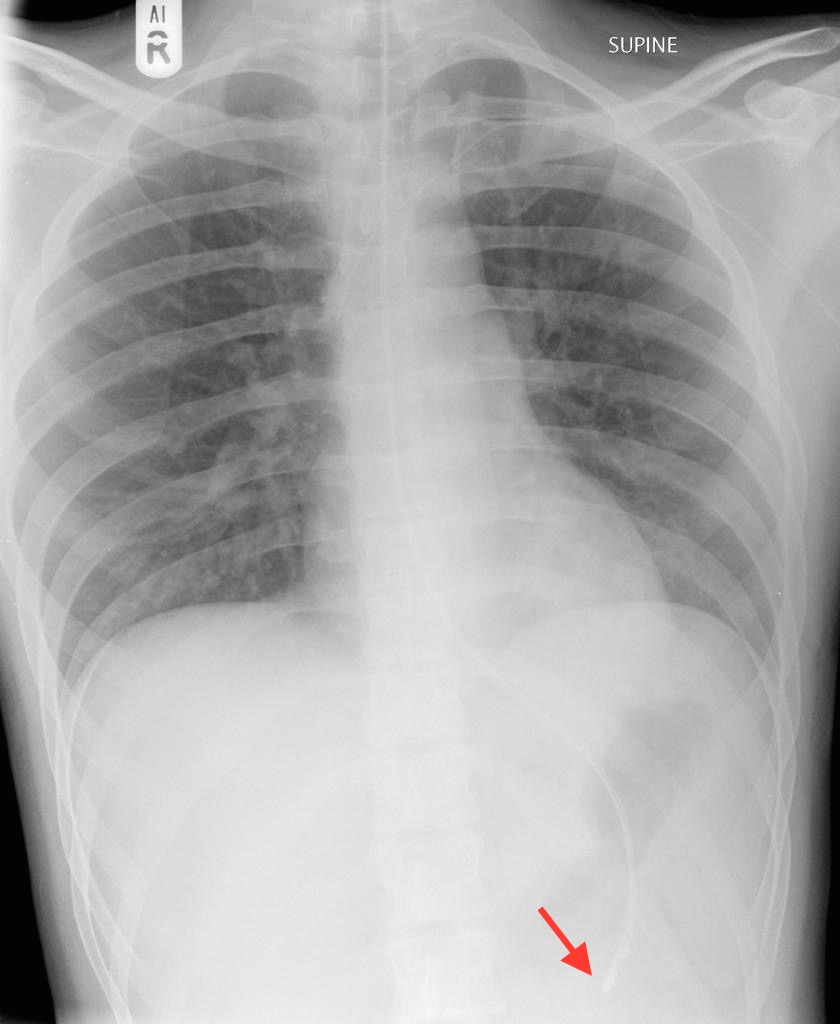WBR1490
| Author | PageAuthor::William J Gibson, Katherine Albutt |
|---|---|
| Exam Type | ExamType::Surgery Shelf |
| Main Category | MainCategory::Upper Gastrointestinal tract |
| Sub Category | SubCategory::Management |
| Prompt | [[Prompt::A 72 year old woman presents to the emergency room for a one week history of bright red blood per rectum and constipation. The patient is hemodynamically stable and shows no signs of acute obstruction or peritonitis. She refuses to drink GoLYTELY to prepare for a colonoscopy, but agrees to administration of the solution by nasogastric tube. Which of the following tests is best to confirm the proper placement of the nasogastric tube?]] |
| Answer A | AnswerA::Upright lateral chest radiograph |
| Answer A Explanation | AnswerAExp::A lateral chest radiograph can cause the 2D projection of the stomach and the lung to be overlapping and may confuse interpretation of the position of the tube. |
| Answer B | AnswerB::Upright anterior-posterior chest radiograph |
| Answer B Explanation | AnswerBExp::One can easily distinguish where or not the nasogastric tube tip is in the stomach or not from an upright anterior-posterior chest radiograph. |
| Answer C | AnswerC::Kidney, Ureter, Bladder radiograph |
| Answer C Explanation | AnswerCExp::The key question in nasogastric tube placement is whether one accidentally inserted the tube through the trachea rather than the esophagus. A KUB X-ray would be unable to address this question. |
| Answer D | AnswerD::Chest CT |
| Answer D Explanation | AnswerDExp::Computed Tomography of the chest would subject the patient to unnecessary radiation and take longer than a chest radiograph. |
| Answer E | AnswerE::Transesophageal Ultrasound |
| Answer E Explanation | AnswerEExp::A chest radiograph is easier to perform, faster and more sensitive for nasogastric tube placement than ultrasound. |
| Right Answer | RightAnswer::B |
| Explanation | [[Explanation::After placement of a nasogastric tube it is important to confirm it has been properly positioned. The best test to do so is an upright anterior-posterior chest radiograph. The most common concern when placing a nasogastric tube is that the tube has entered the trachea rather than the esophagus. If such a mistake were to occur, the patient would be at risk for aspiration, pneumonia or damage to the airway that could include pneumothorax. An upright anterior-posterior chest radiograph allows one to easily visualize the path of the nasogastric tube to ensure that is has entered the stomach. For example, in the anterior-posterior radiograph below, one can clearly see that the tip of the nasogastric tube (red arrow) lies below the lungs, indicating that it has been placed correctly in the stomach.
|
| Approved | Approved::Yes |
| Keyword | WBRKeyword::Radiology, WBRKeyword::Nasogastric, WBRKeyword::NG tube, WBRKeyword::X-ray, WBRKeyword::X ray, WBRKeyword::Radiograph, WBRKeyword::Imaging |
| Linked Question | Linked:: |
| Order in Linked Questions | LinkedOrder:: |
